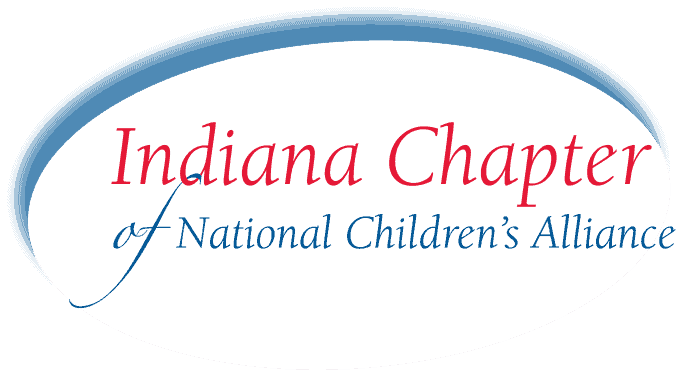
False: Abusive behavior frequently includes mental and psychological abuse, such as manipulation and degradation. But unlike physical abuse, which often causes visible signs such as bruises, rashes, and marks, mental abuse can be far more difficult to notice.
False: Financial abuse can include abusing kids for anything of value. While young kids may lack money, they can be tasked with committing crimes for someone else, such as theft, or the abuse of their bodies.
Kids can also be manipulated into gathering money from friends, family, or others as a means of turning it over to an abuser. This includes cash they may receive for birthdays and holidays. And older kids and teens with jobs can suffer the same kind of financial abuse as adults.
Plausible but not fully understood: The conventional wisdom has held that abused or sexually assaulted kids are more likely to become abusers when they grow up. Indeed, child development and protection experts termed this the “Cycle of Abuse”. However, new research from NIH-funded studies suggests that this is not the case. In one US study, researchers took time to develop a more robust picture of what constitutes abuse beyond official records and also looked at self-reports by parents and the kids. Researchers admit they don’t know why.
In an Australian study, researchers collected data from 1986-2017 and noted “the majority of child maltreatment is occurring among families caught up in intergenerational cycles of child abuse and neglect.” Specifically if the mothers suffered abuse.
In addition, a UK study from 2016 indicated 51% of adults who were abused as kids were also more likely to be abused as adults.
As researchers note, looking at the data is hard. Different states and regions categorize and label abuse slightly differently. Looking at court cases, for instance, frequently involves lower-income people.
CACs exist in part to help stop this cycle, in whatever form it takes, regardless of how it happens. The Philadelphia Children’s Alliance in conjunction with Temple University, found that the recurrence of sexual abuse averaged 48% across 80 studies (PDF). CACs help prevent recurrence by assisting investigators and prosecutors and providing follow-up support to mitigate or eliminate risk factors, such as caregiver concerns.
Fact: Approximately 10,000 children visit a CAC in Indiana each year. Not all of those cases are deemed abuse, and not all substantiated cases result in a conviction. Still, Indiana Department of Child Services statistics indicate that approximately 66% of all reports to law enforcement or the Child Abuse Hotline are screened in, compared to 58% nationally. Indiana has a higher abuse rate than many other states.
In 2022, Indiana had 19,185 child victims of abuse or neglect, which is a rate of about 12 kids per 1,000. Child abuse is “rare” only if you believe that 12 out of 1,000 is an acceptable number. We do not. We know abuse of any kind occurs in every income level, every county, every community. All at roughly equal rates. Child abuse would be rare only if a single substantiated case occurred every few years. That is not the case currently.
False: While it is true that infants who survive abuse are unlikely to remember the abuse, the physical damage can be long-lasting. It is difficult to fully recover from a skull or brain injury, regardless of your age. Further, even relatively young kids can and do remember their abuse, just as many adults likely remember flashes of trauma or pain, such as your first bee sting or falling underwater, long into adulthood.
Fact: Like adults who may fear repercussions or fallout from leaving an adult domestic abuser, kids suffer the same fear. And kids often lack the vocabulary to fully articulate what is happening to them. A six-year-old who is told “this is just a game” and has no further understanding of sexual development will often believe it is a game no matter how painful it is.
It is only when kids are taught safe and unsafe touches (such as touching their genitals), that being hit is a crime, or that being psychologically abused by being called severe names or words, that they come forward.
And only then do kids come forward still fearing the unknown. It takes a lot of courage to come forward and disclose abuse, particularly against a parent or family member. In Indiana, between 80 and 90% of all abuse cases stem from a family member against a child in any given year.
Fact: We know from the terrible murder of Sylvia Likens in the 60s that many adults don’t want to insert themselves into someone else’s business, even if they hear cries for help. It has taken a generation to change this attitude.
In Indiana, and most states, you are a mandated reporter of abuse. If you suspect abuse, you must report it to law enforcement or the Indiana Child Abuse Hotline at 1-800-800-5556. You cannot rely on a bystander effect, assuming someone else will take action.
False: There is no evidence that boys sexually assaulted by men or girls assaulted by women are more likely to be gay or lesbian as adults. However, sexual minority people are more likely to have suffered higher rates of adverse childhood experiences (ACEs) than heterosexuals.
False: Gay and lesbian kids are not at a higher risk of being abused, and gay and lesbian adults are not more or less likely to commit any kind of abuse than any other group or segment of the population. The only evidence or link that exists appears to exist between sexual minorities is that gay and lesbian people self-report higher rates of ACEs.
False: In 2022, there were 213,876 female perpetrators of abuse compared to 199,617 male perpetrators. Another HHS study found a similar rate. This is a complex issue since it is also true that in instances where a mother and father have separated the mother has, historically, been more likely to be the primary caregiver either by presence or court order. This would account for why children are more likely to be abused by their mother or a female caregiver, simply because they are around these women more often than a father or other male.
Still, the difference is small, and it appears women and men commit abuse against their kids or other kids at roughly the same rate.
False: Psychological and emotional abuse, such as yelling at kids or calling them stupid or “a mistake”, is a form of abuse that is very hard to spot when you merely walk past a child in the grocery store. Even teachers and coaches who spend a lot of time around a child may not notice abuse until it is prolonged and severe.
Physical abuse can be equally hard to spot. For instance, child sexual abuse involving genital contact can be impossible for anyone but close guardians to notice unless a child comes forward to a trusted adult. Even then, actual physical evidence of genital abuse is hard to find.
This is why it is important for kids to learn about body safety, boundaries, and abuse prevention so they can be informed of what is and isn’t okay and know how to come forward.
Plausible: Kids are most often abused by parents or a close family member, as much as 70-80% of the time in cases that come to a CAC in Indiana.
- Drugs and alcohol are cited as a contributing factor in about 60% of cases in Indiana.
- The most common incident of abuse is a form of severe neglect, such as not providing a child with a clean home, food, water, or a safe space.
- In these cases, yes, drugs and alcohol are often a contributing or primary factor to the state of the home.
In the remainder of the cases, drugs and alcohol are not cited or mentioned at all.
It is true that to be abusive to a child, one must be suffering some kind of mental stress (financial stress is a leading factor) or illness. Healthy, well-adjusted people by definition, do not abuse kids. Still, it is not the case that perceived “severe” mental illness, like Schizophrenia or Bipolar Disorder, are more likely to result in abuse.
False: This narrative seems to stem from a higher occurrence of news reports that a child was abused because they were crying or misbehaving. In truth, these make up a small number of overall child abuse cases. Rates also exempt circumstances where a parent may physically hurt a child for their overall safety, such as yanking their arm to prevent them from walking into traffic or knocking them down and away from a hot stove.
Regardless, a child’s behavior is no reason to severely abuse kids.
Fact: Financial stress is a leading cause of abuse in the home, often but not always through neglect. Parents are entitled to have a bad day once in a while. And losing a job or struggling with debt from medical bills or other unexpected costs can and does cause parents to yell or become more physical with kids or physically punish them.
But a bad day that turns into a bad week, month, or year becomes a different problem. The damaged relationship, trauma, development harm, and ineffective discipline for small slights or issues can be defined as abusive.
False: It is true that 16 and 17-year-olds (and even younger) can and sometimes do engage in “consensual sex”. Courts face challenges in how to handle these cases and judges must use a lot of discretion to understand teenage sexual conduct, such as if a 17-year-old was “consenting” or not with another 17-year-old. Indeed, state laws try to wrestle with these challenges.Most states, including Indiana, have definitions for what constitutes consent. In Indiana, the general age of sexual consent is 16. Sex under 16 is illegal regardless of consent. Under 16, cases are often deemed peer-on-peer sexual abuse because it is presumed both partners cannot agree to sex any more than they can agree to do drugs or drink alcohol.Those close in age in Indiana, like a 15-year-old, can legally engage in sex, assuming the partner is not more than 4 years older. Those in positions of authority (like a coach or teacher) or where molestation is alleged are illegal at any age.
The rationale for this close-in-age exemption is the so-called “Romeo and Juliet clause”, a legal attempt at ensuring 18-year-old high school students do not get labeled as sex offenders for life for getting caught having consensual sex with a 17-year-old classmate.
False: This form is victim blaming and shaming is not a cause. In fact, most kids and teens who are sexually assaulted were wearing perfectly ordinary, everyday clothing. What a person of any age wears has no recorded, measurable, or meaningful impact on assault or abuse.
True: Children who come forward to disclose abuse or sexual assault very often indicate that their siblings suffer the same abuse. This is because child molesters will and do molest virtually any and every child they have access to. Because having a private space to molest children is relatively difficult to come by, this results in kids being molested by people they know. It is not a stranger in a van who snatches kids at the park, but the grandparent or uncle who was asked to watch the kids one weekend while the parents were away.
False: Investigators, forensic interviewers, and prosecutors have become very adept at ensuring children who are victims of abuse speak about their abuse truthfully and with the best knowledge and vocabulary they possess without leading them to conclusions.
It is almost unheard of that an abuser or child molester could get even young children to believe “someone else” was assaulting them. There are just some things you would not and do not forget.

